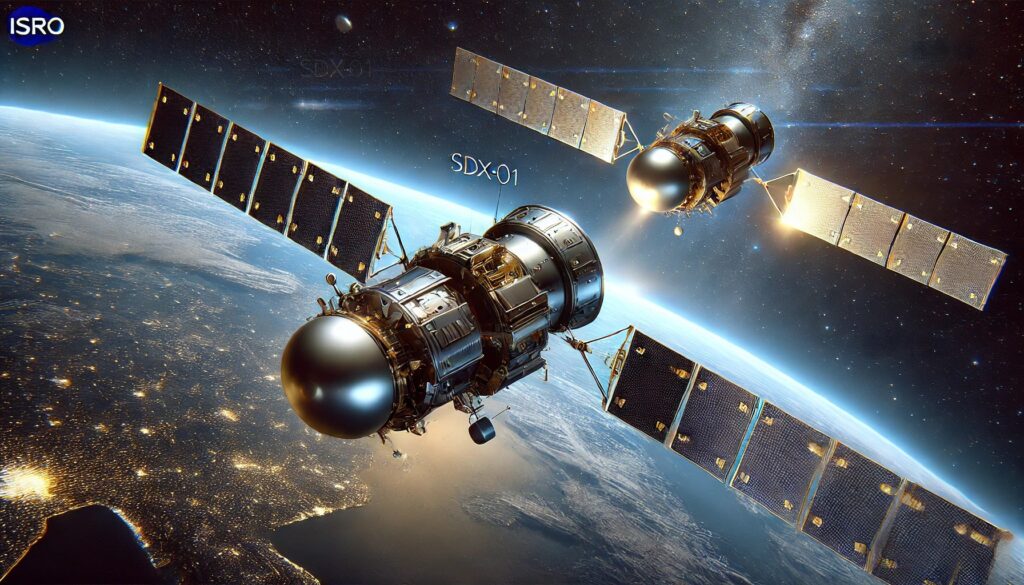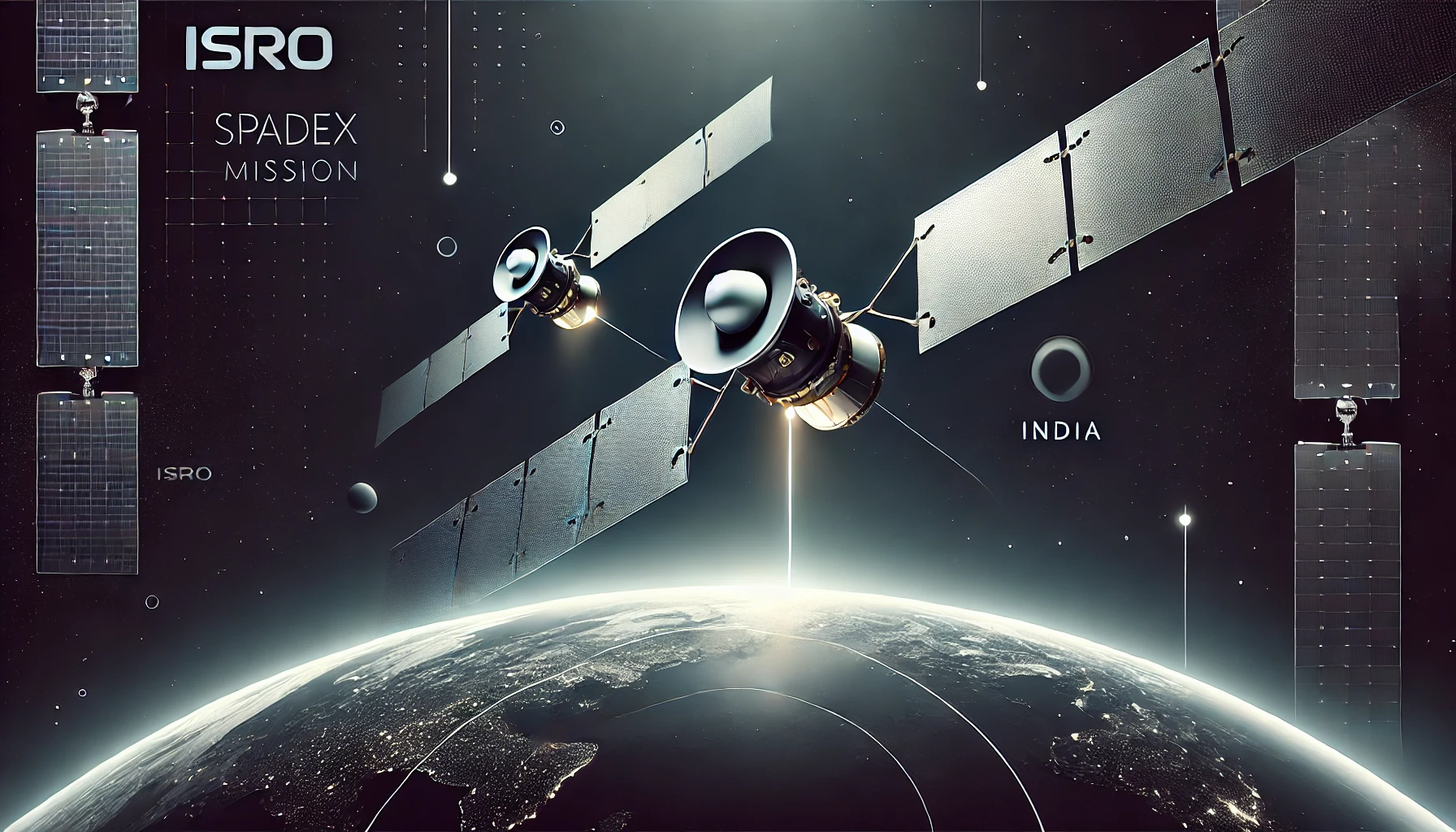ISRO’s Historic Spadex Mission: Revolutionizing Space Technology with Autonomous Satellite Docking
In a remarkable end to 2024, the Indian Space Research Organisation (ISRO) is preparing to write another chapter in space exploration history with its ambitious Spadex (Space Docking Experiment) mission. Set to launch on December 30 at 9:58 PM from the picturesque Sriharikota spaceport, this groundbreaking mission represents India’s bold step into advanced satellite technology, promising to revolutionize how we approach space operations.
Breaking New Ground: The Dance of Two Satellites
Picture this: two sophisticated satellites, weighing 220 kilograms each, orchestrating an intricate celestial ballet 470 kilometers above Earth. The mission’s stars – SDX01 (fondly nicknamed “Chaser”) and SDX02 (known as “Target”) – are set to demonstrate something that sounds straight out of science fiction: autonomous satellite docking in space.
Think of satellite docking as parallel parking in space, but infinitely more complex. The stakes are higher, the precision required is astronomical, and there’s no margin for error. This isn’t just about bringing two spacecraft together; it’s about perfecting a technology that could become the backbone of future space exploration.
The Choreography of Space: How Spadex Will Unfold
The mission begins with the reliable PSLV-C60 rocket carrying both satellites into orbit. What follows is a carefully choreographed sequence of events:
Phase 1: The Initial Separation
The satellites will first part ways, creating a gap of 10-20 kilometers between them. This separation isn’t random; it’s precisely calculated using the rocket’s velocity adjustments. The Target satellite will then hold this position, like a dance partner waiting for their counterpart.
Phase 2: The Careful Approach
The Chaser satellite begins its methodical approach, gradually closing the distance. This phase requires extraordinary precision – imagine threading a needle while both the needle and thread are moving at orbital velocities.
Phase 3: The Final Connection
The culmination comes with the actual docking, where both satellites must align perfectly to connect. Once docked, they’ll demonstrate power transfer capabilities and joint control – a feat that showcases the mission’s true technological sophistication.
Innovation at Its Core: The Technology Behind Spadex
The mission showcases several cutting-edge technologies:
- Advanced sensors and docking mechanisms that ensure precise alignment
- A sophisticated navigation system using satellite constellations
- High-resolution cameras on the Chaser satellite for detailed visual monitoring
- Multispectral imaging capabilities on the Target satellite for Earth observation
- Radiation monitoring equipment for gathering crucial space environment data
Beyond Docking: A Laboratory in Space
What makes Spadex particularly fascinating is its additional experimental payload. The rocket’s final stage will carry 24 different experiments, including:
- A robotic arm designed to capture space debris
- Pioneering studies on seed germination in space
- Plant growth experiments in microgravity conditions
Why Spadex Matters: The Bigger Picture
This mission isn’t just about technological achievement; it’s about laying the groundwork for India’s ambitious future in space. The successful demonstration of satellite docking capabilities could revolutionize:
- Future lunar missions like Chandrayaan-4
- The development of India’s proposed space station (Bharatiya Antariksh Station)
- Satellite maintenance and refueling operations
- Space debris management
- Deep space exploration capabilities
Looking to the Future
With a planned operational life of two years, both satellites will continue to provide valuable data and insights long after their initial docking demonstration. This mission represents not just a technological milestone for ISRO, but a giant leap forward in India’s space capabilities.
The Spadex mission stands as a testament to human ingenuity and India’s growing prominence in space technology. As we watch these two satellites perform their cosmic dance, we’re witnessing more than just a technical demonstration – we’re seeing the future of space exploration unfold before our eyes.

Frequently Asked Questions: ISRO’s Spadex Satellite Docking Mission
What is the Spadex mission?
Spadex (Space Docking Experiment) is ISRO’s pioneering mission to demonstrate autonomous satellite docking capabilities in space. The mission involves two satellites – SDX01 (Chaser) and SDX02 (Target) – that will perform complex maneuvers to dock with each other in orbit, while also conducting various scientific experiments.
When and where will the Spadex mission launch?
The Spadex mission is scheduled to launch on December 30, 2024, at 9:58 PM IST from ISRO’s Sriharikota spaceport (SHAR) in Andhra Pradesh, India. The mission will use the PSLV-C60 launch vehicle to place the satellites into orbit.
What are the main objectives of the Spadex mission?
The primary objectives include:
- Demonstrating autonomous satellite docking in orbit
- Testing power transfer capabilities between docked satellites
- Validating precision control and navigation systems
- Conducting Earth observation and space environment studies
- Testing new technologies for future space station development
What makes satellite docking so challenging?
Satellite docking is extremely challenging because it requires:
- Precise alignment of two spacecraft moving at orbital velocities
- Complex navigation and control systems
- Accurate sensors and real-time adjustments
- Perfect timing and coordination
- Management of various environmental factors in space
How will the docking process work?
The docking process will occur in several stages:
- Initial separation of satellites to 10-20 km
- Maintenance of relative position by the Target satellite
- Gradual approach by the Chaser satellite
- Final precision alignment and docking
- Power transfer and joint control demonstrations
What are the specifications of the Spadex satellites?
- Weight: 220 kg each
- Orbit: 470 km circular orbit
- Operational life: 2 years
- Key systems: Docking mechanism, navigation sensors, surveillance cameras
- Special payloads: Multispectral imaging, radiation monitoring equipment
How will this mission benefit future space exploration?
The Spadex mission will contribute to:
- Development of India’s future space station
- Enhanced satellite servicing capabilities
- Improved space debris management
- Advanced in-orbit assembly techniques
- Future lunar missions like Chandrayaan-4
What additional experiments are part of the mission?
The mission includes 24 additional experiments:
- Robotic arm testing for debris capture
- Seed germination studies in space
- Plant growth experiments
- Radiation monitoring
- Various technological demonstrations
How does Spadex compare to other international docking missions?
While several space agencies have demonstrated docking capabilities, Spadex represents:
- India’s first autonomous satellite docking mission
- One of few missions using smaller satellites for docking
- A cost-effective approach to developing critical space technologies
- A significant step in India’s space station development plans
What happens after the docking demonstration?
After the initial docking demonstration:
- Both satellites will separate and continue their individual missions
- They will operate their scientific payloads for up to 2 years
- Data will be collected for future mission planning
- The technologies demonstrated will be refined for future applications
How will this mission impact India’s space program?
The Spadex mission will:
- Enhance India’s space capabilities
- Provide crucial experience in complex space operations
- Support the development of future space infrastructure
- Strengthen India’s position in the global space community
- Enable more ambitious future missions




